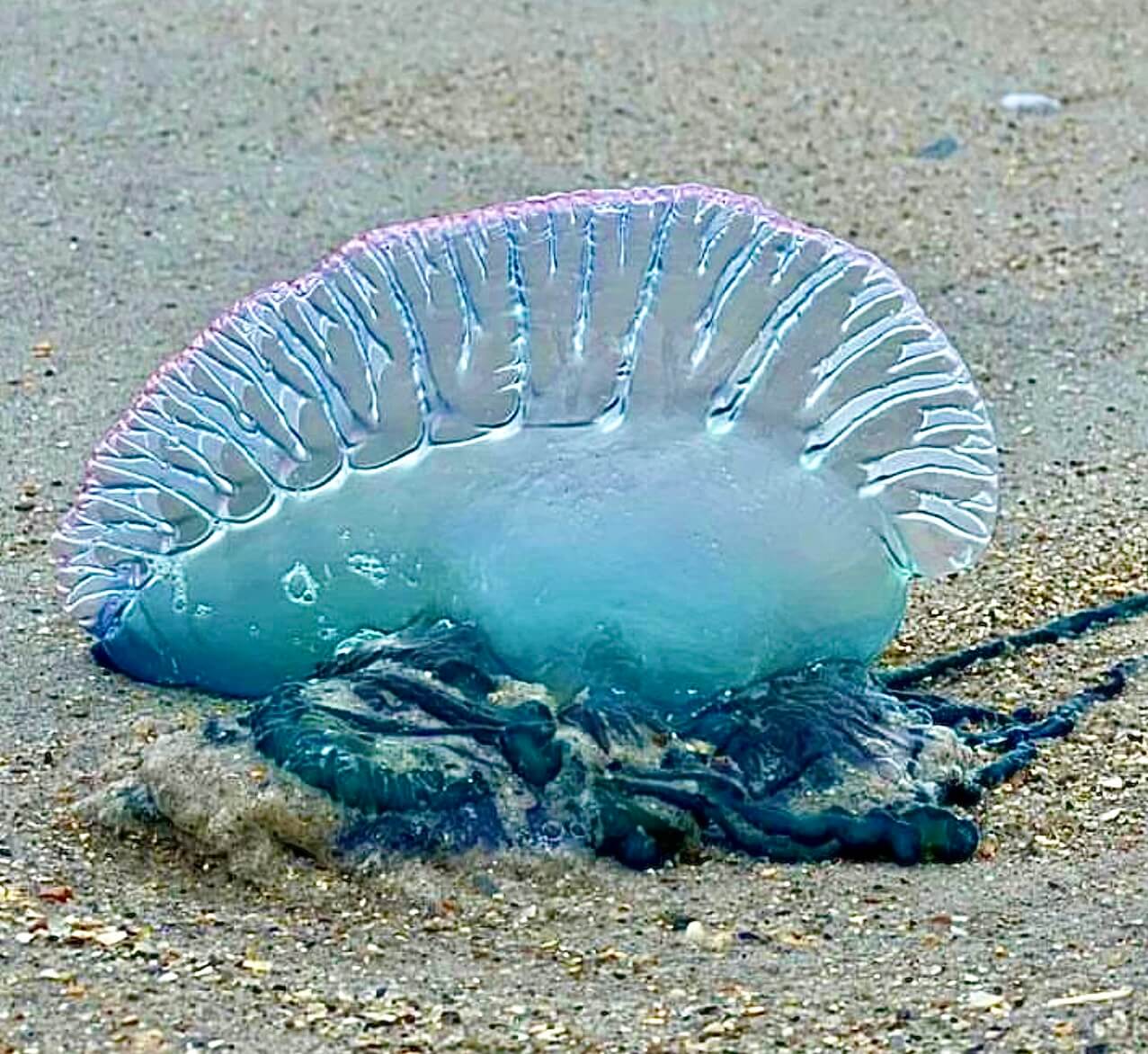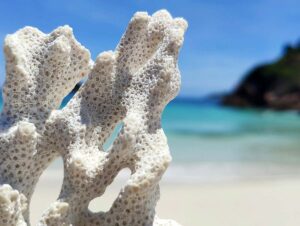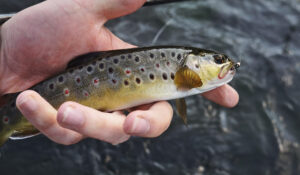The Portuguese Man o’ War is a creature that inspires both awe and fear. Its vivid colors and delicate, floating beauty belie the dangerous venom that makes it one of the ocean’s most iconic predators. Often mistaken for a jellyfish, the Portuguese Man o’ War (Physalia physalis) is actually a siphonophore—a colonial organism made up of specialized individuals that work together as one.
Not a Jellyfish: The Structure of a Siphonophore
The Portuguese Man o’ War is not a single organism but a complex colony of interconnected polyps, each of which has a specialized role. A single Man o’ War is composed of four main types of polyps:
- The Pneumatophore – This is the gas-filled, balloon-like structure that floats above the water, acting as a sail to help it drift along ocean currents. It’s often an iridescent blue or pink and can be inflated or deflated as needed, which gives it a level of control over its position in the water.
- The Dactylozooids – These are the long, trailing tentacles that extend beneath the surface, reaching lengths of up to 165 feet (50 meters) in some cases. They are armed with specialized cells called nematocysts, which contain venomous barbs used to paralyze and capture prey.
- The Gastrozooids – These polyps are responsible for digesting food. Once a tentacle captures and paralyzes prey, the gastrozooids break down the nutrients and distribute them throughout the colony.
- The Gonozooids – The reproductive polyps, which are responsible for ensuring the species’ continuity.
This division of labor makes the Portuguese Man o’ War uniquely suited for life on the open seas, drifting wherever currents and wind take it.
Venomous Tentacles: A Potent Defense and Hunting Mechanism
One of the most fascinating—and dangerous—aspects of the Portuguese Man o’ War is its venomous tentacles. The tentacles contain millions of nematocysts, each with a coiled barb that injects venom into anything that brushes against them. This venom can paralyze or kill small fish and other prey, allowing the Man o’ War to feed.
For humans, a sting from a Portuguese Man o’ War can be excruciatingly painful, causing welts, swelling, and even nausea or difficulty breathing in severe cases. While rarely fatal, the sting is notorious for its long-lasting pain and potential complications. It’s also important to note that even dead or detached tentacles can retain their sting, so it’s crucial to avoid contact with washed-up Man o’ War on the beach.
A Drifter by Nature: The Portuguese Man o’ War’s Habitat and Movement
The Portuguese Man o’ War is primarily found in warm, tropical, and subtropical waters around the world, especially in the Atlantic, Pacific, and Indian Oceans. They are commonly seen off the coast of Florida, the Caribbean, and parts of Australia. These creatures rely on ocean currents and wind to move, drifting along the surface with the aid of their pneumatophore “sail.”
Interestingly, Portuguese Man o’ War can also adjust their floating orientation based on the wind. Some individuals are “left-handed” (with the sail leaning to the left), while others are “right-handed.” This adaptation prevents them from getting stranded on beaches en masse, as left-leaning and right-leaning Man o’ Wars will naturally drift in different directions, increasing their survival rate.
The Name “Portuguese Man o’ War”
The name “Portuguese Man o’ War” likely comes from the resemblance of the pneumatophore to the sails of 18th-century Portuguese warships. The sight of its sail bobbing along the waves, colorful and dangerous, perhaps reminded early sailors of these formidable ships.
Predators of the Portuguese Man o’ War
Despite its potent sting, the Portuguese Man o’ War is not without predators. The loggerhead turtle, for instance, has thick skin in its mouth and throat that allows it to feed on Man o’ Wars without being affected by the venom. Other animals, like the ocean sunfish and certain species of nudibranch (sea slugs), have also adapted to feed on them.
One of the most interesting predators is the blue dragon, a type of small sea slug. The blue dragon not only eats the Portuguese Man o’ War but also stores its venomous nematocysts in its own body, using them for its own defense.
Reproduction: How Portuguese Man o’ War Populations Grow
Portuguese Man o’ War reproduction is still not fully understood, as they are challenging to study in a lab. However, it’s believed that they reproduce through a process called “budding,” where new polyps develop on an existing colony and eventually form a new, fully functional individual.
When conditions are right, large numbers of Man o’ Wars may appear in the same area, forming swarms that can cover large stretches of coastline. These gatherings are often attributed to favorable currents and winds, rather than deliberate social behavior, as each Man o’ War is independent and largely at the mercy of the ocean.
How to Treat a Portuguese Man o’ War Sting
Encounters with a Portuguese Man o’ War can be extremely painful. If you are stung, here’s what experts generally recommend:
- Avoid Rubbing the Area – This can make the venom spread and worsen the sting.
- Remove Tentacles Carefully – Using a pair of tweezers or gloves, carefully remove any visible tentacle fragments. Do not touch them directly.
- Rinse with Seawater – Rinse the area with seawater, not freshwater, as freshwater can trigger additional nematocysts to release venom.
- Apply Heat – Warm (not hot) water or a warm compress can help alleviate the pain. Vinegar is sometimes used for certain jellyfish stings but may not be effective for Portuguese Man o’ War.
If symptoms persist or if there’s a severe reaction, it’s important to seek medical attention.
Conclusion: A Beautiful and Deadly Drifter
The Portuguese Man o’ War is a captivating creature of the sea, blending both danger and beauty in its translucent sail and trailing tentacles. Though it may resemble a jellyfish, its colony structure and unique adaptations make it an extraordinary member of the ocean ecosystem. Check out our Jellyfish canvas art print for a cool marine themed wall art for your home or office. While it’s best admired from a distance, the Man o’ War plays an important role in marine environments, and its interactions with other species highlight the incredible balance of ocean life.




